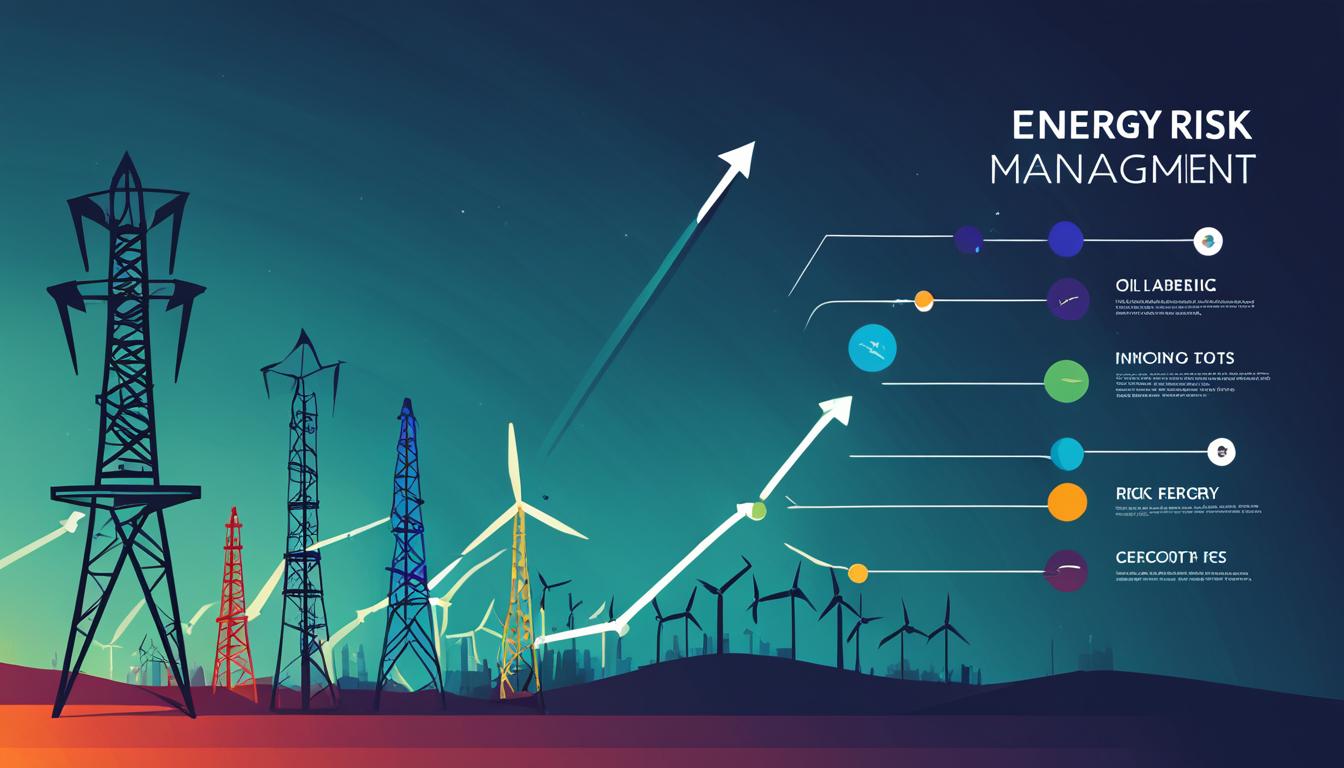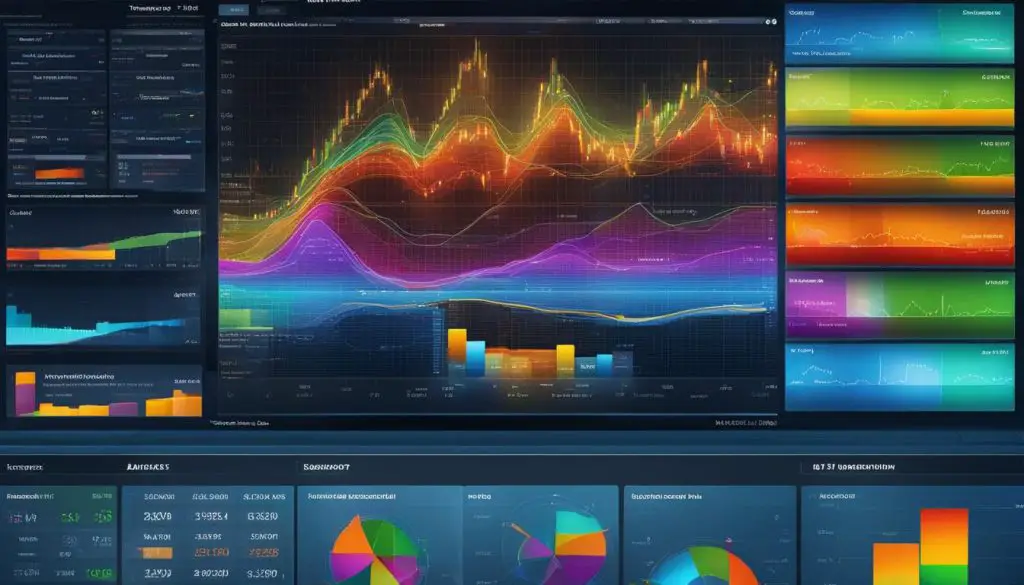In the realm of energy markets, where unpredictability reigns, the implementation of robust energy trading risk management strategies is fundamental to maintaining financial stability for companies engaged in this volatile sector. Energy trading risk management (ETRM) systems emerge as a vital instrument, orchestrating a symphony of data and decisions that resonate across trade floors, operations, credit management, and accounting. The coherent functionality of ETRM not only optimizes market execution but also upholds essential communication, securing a stable footing amidst the tremors of market volatility.
Understanding the Fundamentals of Energy Trading and Risk Management (ETRM)
The domain of energy trading is ever-evolving, with ETRM systems at its nexus, offering a robust structure crucial for energy markets dynamics. As global markets grapple with energy risk management, ETRM systems coalesce the necessary processes and technologies to navigate the trade of commodities like electricity, oil, natural gas, and renewables.
Much more than tools, ETRM solutions act as gatekeepers, enhancing operational efficiency while fully equipping stakeholders with the agility to respond to market fluctuations and regulatory changes. Amidst market shifts driven by deregulation and increasing renewable sources, ETRM platforms provide critical support in decision-making, grounded in thorough real-time analytics.
- Portfolio management refinement guiding trading strategies
- Rigorous market analysis for clearer insights into commodity prices
- Trade capture precision ensuring transactions are logged accurately
- A staunch observance of regulatory compliance tools
Tools deployed within ETRM systems represent a significant leap forward in addressing market challenges, characterized by price volatility and the complexities introduced by deregulation and policy shifts.
| ETRM Function | Benefits |
|---|---|
| Portfolio Management | Streamlined asset optimization |
| Market Analysis | Enhanced decision-making with real-time data |
| Trade Capture & Execution | Minimized errors and reconciliation issues |
| Regulatory Compliance | Reduced risk of violations in rapidly changing markets |
In brief, the significance of ETRM systems in the landscape of energy trading cannot be overstated. Centralizing critical functionalities, they stand as a testament to innovative solutions that continue to redefine energy risk management and operational success.
Key Components of Effective Energy Risk Management
Central to the optimization of energy commodity trading is the sophistication and robustness of market execution and data exchange mechanisms. With a constantly evolving trade lifecycle, energy trading entities are necessitating advanced ETRM systems that serve as the bedrock for real-time, reliable data flow and operational integration. These systems foster an environment where information is leveraged as capital, promoting dynamic and foresighted risk management policies.
Market Execution and Data Exchange Mechanisms
The intricacy of data exchange serves as a linchpin for successful market execution within the energy sector. ETRM systems play a pivotal role in this exchange, connecting disparate functional areas such as trading, operations, and financial reporting. These advanced networks facilitate the real-time, seamless transfer of vital data that powers strategic decision-making and propels trade efficiency.
Integrated System Functions Across Trading Operations
ETRM systems exemplify the essence of integrated system functions. By melding critical aspects of trade operations, from initiation through to final settlement, these systems curtail redundancy and open channels for strategic alignment across various sectors. The encapsulation of event logging, trade identification, and process tracking reflects a holistic approach to operational management and strategic oversight.
Event, Trade Identification, and Capture Processes
Accuracy in event and trade identification is the fulcrum on which ETRM systems pivot. These processes anchor the comprehensive capture and logging of trade-related activities, ensuring a robust framework that supports risk management policies tailored to organization-specific goals and tolerance levels. These frameworks are instrumental in mitigating risks and ensuring compliance with both internal and external regulatory standards.
| ETRM System Function | Benefits | Organizational Impact |
|---|---|---|
| Real-time Data Exchange | Enhanced market responsiveness | Strategic decision-making |
| Trade Lifecycle Management | Streamlined operational workflow | Resource optimization |
| Event Logging and Trade Identification | Accurate tracking of trading activities | Risk mitigation and regulatory compliance |
| Integrated Risk Management Policies | Alignment with organizational risk tolerance | Consistent risk management approach |
Enhancing Decision-Making in Energy Trading
The landscape of energy trading is one that continually evolves, demanding that participants harness sophisticated tools for sound decision-making. Central to this is the use of Energy Trading and Risk Management (ETRM) systems. These powerful platforms provide comprehensive market insights, enabling traders to make informed energy trading decisions and facilitate thorough risk analysis. By leveraging the capabilities of ETRM programs, trading entities are able to iterate through complex ‘what-if’ scenarios that simulate a variety of market conditions, thus preparing them for the dynamics of the actual trading environment.
ETRM systems aid in refining the precision of energy trading decisions by aligning risk limits with corporate risk tolerance levels and keeping track through vigilant monitoring. This tailoring ensures that each decision is not only made with the best available information but also adheres to the organization’s strategic benchmarks.
- Integration of real-time data for proactive energy trade positioning
- Advanced scheduling tools to optimize and forecast energy distribution
- Incorporation of smart analytics to encourage data-driven strategies
- Automated tracking systems for maintaining risk thresholds
Moreover, the dynamic environment fostered by ETRM tools ensures day-to-day activities are executed with greater efficiency. Through straight-through processing, transactions are expedited, reducing the potential for error and freeing up resources to concentrate on strategic analysis and market exploration.
The integration of ETRM systems within energy trading companies continues to redefine the experienced landscape, promoting a culture of meticulous assessment and agile decision-making. As the market continues to present new challenges and opportunities, these systems stand as a pillar, supporting traders and risk managers in navigating the ever-complex energy markets with confidence and insight.
The Role of Technology in Energy Trading Risk Management
As the energy sector evolves, technology has become an indomitable force in shaping the landscape of energy trading risk management. Sophisticated tools are now at the forefront, advancing operation optimization and enhancing settlement solutions. This technological leap is not just transforming the energy market interface, but is also equipping traders with robust ETRM systems that support strategic decision-making processes.
Energy Market and Settlement Solutions
Integration of technology in the energy sector has led to the development of cutting-edge market and settlement solutions, paving the way for streamlined financial and commodity trading. These solutions are crucial for maintaining balance and efficiency in operations related to generation and load, ensuring that energy markets, including emerging ones, run optimally.
Advanced Data Analytics in ETRM Systems
The integration of advanced data analytics into ETRM systems has been transformative, introducing a new era of predictive modeling and data-driven decision-making. Employing artificial intelligence and machine learning, these systems provide traders with predictive insights and enhanced algorithmic trading capabilities, essentially elevating the role of data in managing energy risks.
- Real-time market analysis
- Scenario-based risk assessment
- Intelligent trade recommendations
Optimizing Trading with Dynamic ETRM Solutions
In the quest to optimize trading operations, dynamic ETRM solutions emerge as essential tools. They offer user-friendly interfaces, clarity in data presentation, and facilitate algorithm-driven trading optimization. The application of cloud-based ETRM further revolutionizes trading strategies with its scalability, accessibility, and collaborative capabilities, which are vital for companies seeking to stay competitive in swiftly changing markets.
- Maximize trading efficiency and reduce redundancy
- Implement scalable, cloud-based ETRM solutions
- Enable real-time collaboration and accessibility
Addressing Market Volatility and Regulatory Compliance
The landscape of energy trading is notoriously susceptible to market fluctuations and price volatility. To navigate this terrain effectively, industry players are increasingly reliant on Energy Trading and Risk Management (ETRM) systems. Vital components of ETRM include tools that secure regulatory compliance and provide critical market insights, allowing firms to adeptly manage the challenges of the current market while fostering ETRM growth.
Tools for Adherence to Regulations in Energy Trading
ETRM systems emerge as indispensable allies in ensuring compliance with multifaceted legal standards. The capabilities of these systems to document and oversee trading maneuvers with precision are necessary in the face of rigid and ever-changing regulation. Companies depend on advanced energy trading tools to maintain integrity and transparency within the market, enabling them to meet regulatory demands and promoting fair practices across the industry.
Strategies to Tackle Price Volatility and Market Insights
To contend with the intricacies of price volatility, energy companies are prioritizing strategies underpinned by real-time data availability. The agility afforded by ETRM platforms in performing risk assessments allows for swift adaptation to market fluctuations. By leveraging detailed market insights, these systems play a crucial role in risk mitigation, equipping companies to preserve competitiveness without compromising on the need for stringent compliance.
FAQ
Energy trading risk management strategies encompass approaches that businesses use to identify, evaluate, and mitigate risks associated with the trade of energy commodities. These strategies prioritize financial stability and seek to minimize the impact of market volatility on trading operations.
ETRM systems support energy trading by providing an integrated platform for trade capture, risk management, logistics, market analysis, and compliance. These systems facilitate the real-time exchange of vital data among different functions within an organization and are essential for informed and efficient market execution.
Effective energy risk management hinges on robust market execution, seamless data exchange mechanisms, and an integrated system that covers all stages of the trade lifecycle. It involves precise event logging, identification and capture of trade opportunities, and robust risk management policies.
Advanced data analytics contribute to energy risk management by utilizing predictive models, algorithmic trading techniques, and real-time data processing. This insight enables energy traders to anticipate market trends, manage risks more effectively, and make better strategic decisions.
Strategies to tackle price volatility in energy markets include using sophisticated risk management and forecasting tools, implementing hedging techniques, staying informed with real-time market data, and maintaining flexible trading strategies that can adjust quickly to market dynamics.






